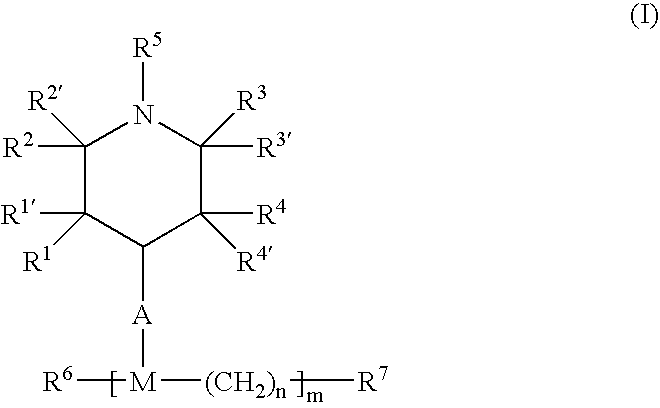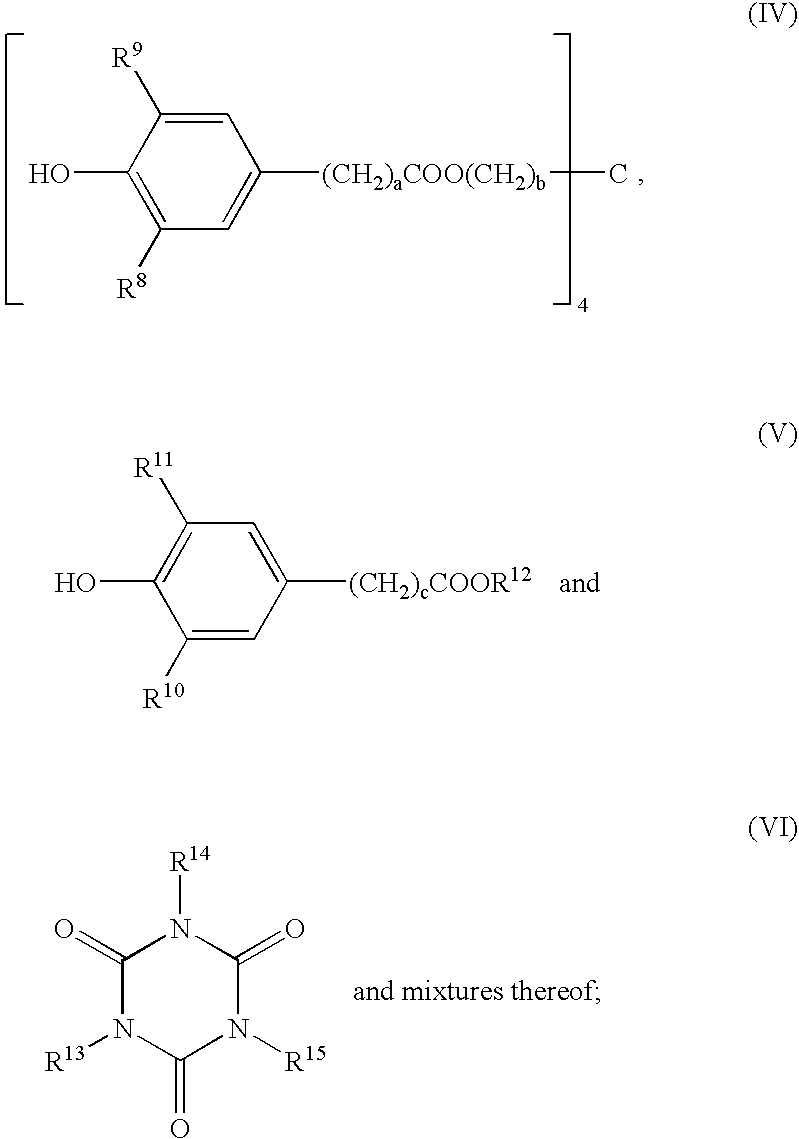Ultraviolet radiation stabilized polyolefins
a radiation stabilized, polyolefin technology, applied in printing and other directions, can solve the problems of insufficient polypropylene copolymer composition, little or no cleaning or de-sealing, and substantial catalyst residue left in the polymer
- Summary
- Abstract
- Description
- Claims
- Application Information
AI Technical Summary
Benefits of technology
Problems solved by technology
Method used
Image
Examples
examples
[0081]The present invention, while not meant to be limiting by, may be better understood by reference to the following example and Tables.
[0082]The components of the present invention are blended as follows. The components are weighed and mixed together in a HENSCHEL blender; then, the homogeneous mixtures are formed into pellets using a twin-screw extruder ZSK53 from WERNER. The screw speed is 250 rpm and the extruder is operated at a temperature of about 240° C.
[0083]Examples 1 and 2 are extruder blends (Werner ZSK53) of a copolymer of metallocene catalyzed polypropylene (17 wt % ethylene copolymer) that has been deashed (stripped) using water in a single step. The polymerization is performed in a SPHERIPOL-type plant. The first stage of the reaction section is a liquid loop reactor, which produces homopolymers in a medium of liquid propylene monomer. Mixing is provided by circulation of the liquid monomer. Polymer suspended in liquid propylene is discharged from the base of the l...
PUM
| Property | Measurement | Unit |
|---|---|---|
| wt % | aaaaa | aaaaa |
| wt % | aaaaa | aaaaa |
| wt % | aaaaa | aaaaa |
Abstract
Description
Claims
Application Information
 Login to View More
Login to View More - R&D
- Intellectual Property
- Life Sciences
- Materials
- Tech Scout
- Unparalleled Data Quality
- Higher Quality Content
- 60% Fewer Hallucinations
Browse by: Latest US Patents, China's latest patents, Technical Efficacy Thesaurus, Application Domain, Technology Topic, Popular Technical Reports.
© 2025 PatSnap. All rights reserved.Legal|Privacy policy|Modern Slavery Act Transparency Statement|Sitemap|About US| Contact US: help@patsnap.com



